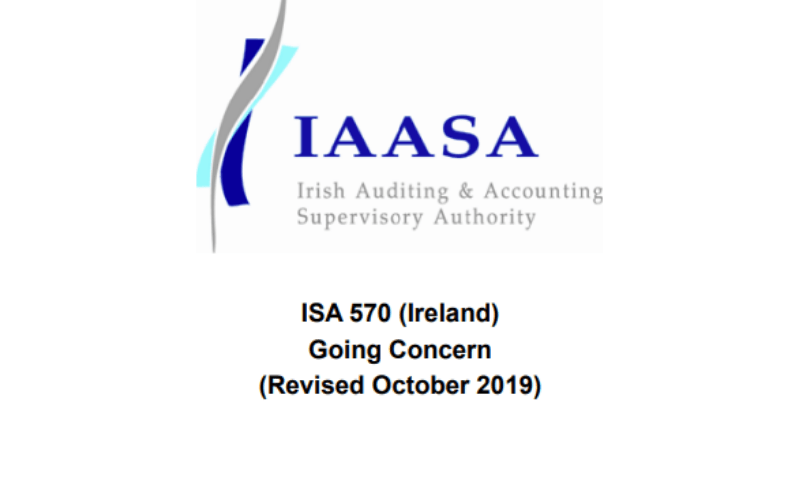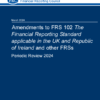by John McCarthy Consulting Ltd. | Nov 10, 2019 | Blog, News
Factoring in Ireland and the UK worth more than €400 billion.
Last week we discussed how reverse factoring works. Now we look at how it works in a little more detail.
Broadly there are two different objectives from the originator for such schemes:
1) Supplier focused – to support smaller suppliers
2) Company focused – to support the originator’s working capital management and financing.
Whilst these two objectives are quite different, it is often difficult to assess from the available disclosure what the company’s objective is.
Normal payment terms might see a purchaser pay a supplier within thirty days. The switch to a reverse factoring facility might also see the payment terms increase, to as much as 120 days, as the facility provider will agree terms with the originator. Any increase in payment period will have the effect of improving the originator’s working capital cycle.
How prevalent is reverse factoring?
It is difficult to get accurate and up-to-date data but the European Factoring Association estimates that the total of factoring and reverse factoring for the UK & Ireland combined was £350bn (or over €400bn) in 2017.
Collapse of Carillion
According to a January 2018 analysis by the London Business School (LBS), Carillion used reverse factoring to its detriment.
Carillion was less than transparent about this arrangement in its 2016 financial statements. The facility was recorded in Carillion’s balance sheet within ‘other creditors’ of £760.5 million, on page 118 of the 2016 financial statements – without any explicit note.
More to follow next week in our last blog on reverse factoring.
For more on company law matters please see our webinar on ‘Company Law Update’.
See our completely up to date 2019 AML Policies & Procedures Manual for Accountants.
Also see our newest engagement letter publications for Partnership Compilation including Tax Engagement Letter under FRS 102 and FRS 105 for €50 each.
by John McCarthy Consulting Ltd. | Nov 1, 2019 | Blog, News
Some lessons for us all from the Carillion collapse.
A very useful publication was issued recently by the little known Financial Reporting Council Lab called ‘Disclosures on the Sources and Uses of Cash’.
Tucked away in the appendix of the publication is a very interesting explanation of reverse factoring. This financing method had a role to play in the downfall of Carillion as reported by the Financial Times in January 2018.
Reverse factoring is a type of finance transaction akin to factoring. In a traditional factoring arrangement a business will sell its accounts receivables (i.e. invoices it has raised with buyers) to a third party (usually a bank) in exchange for a significant proportion of the cash value of the invoices.
Factoring provides earlier access to cash from sales than would otherwise follow the traditional credit terms.
Reverse factoring is similar to factoring, but it is the purchaser rather than the seller who is the originator of the facility.
In reverse factoring the purchaser of goods organises a facility with their bank or other finance provider. This facility allows suppliers to get their invoices factored, and receive cash at a point before the purchaser intended to pay. This type of scheme is particularly beneficial to smaller suppliers who may not have sufficient financial strength to obtain competitive factoring terms themselves. Sometimes reverse factoring is called by a different name like ‘supplier chain finance’.
Whilst normal payment terms might see a purchaser pay a supplier within 30 days, the switch to a reverse factoring facility might also see the payment terms increase up to 120 days, as the facility provider will agree terms with the originator. Any increase in payment period will have the effect of improving the originator’s working capital cycle.
Unfortunately, in Carrillion’s Annual Report for 2016 the existence of reverse factoring arrangements was not fully disclosed. It can only be presumed to be included on page 116 of the 2016 Annual Report within Note 20 Other Creditors of £760.5m (2015 £561.7m). In 2012 Carillion had announced a switch from paying its suppliers on normal credit terms to paying them, after 120 days. If supplier needed payment earlier, Carillion had arranged a bank to pay them sooner.
The message for readers is: do your clients have financing arrangements like reverse factoring? If so, you need to ensure this is properly disclosed.
A good example of supply chain financing disclosure is in Note 19 Trade and Other Payables on page 177 of the 2018 financial statements of AstraZeneca Plc where it states ‘Trade payables includes $166m (2017: $64m; 2016: $nil) due to suppliers that have signed up to a supply chain financing programme, under which the suppliers can elect on an invoice by invoice basis to receive a discounted early payment from the partner bank rather than being paid in line with the agreed payment terms.’
More on this in our next blog.
For more on accounting matters please see our webinar on ‘Common Errors in FRS 102 Accounting’.
See our completely up to date 2019 AML Policies & Procedures Manual for Accountants.
Also see our newest engagement letter publications for Partnership Compilation including Tax Engagement Letter under FRS 102 and FRS 105 for €50 each.

by John McCarthy Consulting Ltd. | Oct 29, 2019 | Blog, News
The UK audit regulator has revealed that among the key reasons for launching an investigation into the collapse of Thomas Cook were ‘issues around going concern and goodwill impairment.’
As if on cue, the Irish audit regulator IAASA, has just issued (October 2019) a revision to the audit standard on Going Concern, called ISA 570. This comes into effect for audits of accounting periods that commence on or after 15 December 2019.
The revised standard on Going Concern in Ireland will trigger additional audit work and evidence gathering for auditors in the following areas:
- greater work on the part of the auditor to more robustly challenge management’s assessment of going concern;
- thoroughly test the adequacy of the supporting evidence;
- evaluate the risk of management bias;
- make greater use of the viability statement;
- improved transparency with a new reporting requirement for the auditor of public companies, listed and large private companies to provide a clear, positive conclusion on whether management’s assessment is appropriate;
- to set out the work they have done in this respect; and
- a stand back requirement to consider all of the evidence obtained, whether corroborative or contradictory, when the auditor draws their conclusions on going concern.
This standard arrives at a very important time, in the midst of serious questions being raised about recent corporate collapses in the UK such as the travel company Thomas Cook, BHS and Carillion.
The ongoing FRC investigation into EY’s audit of the financial statements of Thomas Cook Group has raised questions about the sufficiency of the challenge auditors applied to management’s assumptions about going concern and goodwill, and the sufficiency of the audit evidence to support the work that was done.
Answering questions from the UK Business, Energy and Industrial Strategy (BEIS) committee, the FRC director of enforcement, Elizabeth Barrett, told UK MPs that there was sufficient information about potential issues within the audit to merit an investigation.
When asked to specify those concerns, Barrett replied ‘broadly speaking, in particular issues around going concern and goodwill impairment.’
While Thomas Cook had reported impairments to goodwill in 2011, there had been no further reporting on this until 2019, when £1.1bn was written down.
The UK audit regulator (FRC) has also amended the audit standards on going concern and goodwill impairment in recent times.
Support material
For more on best practice in Audit , see our up to date webinar here.

by John McCarthy Consulting Ltd. | Oct 21, 2019 | News
The amendments to FRS 102 that were made and issued as part of the FRC Triennial Review almost two years ago, in December 2017, must now be adopted and put into practice.
The changes could be early adopted as far back as 1 January 2018 and in the case of directors’ loans to a ‘small’ company, from 8 May 2017.
The more significant changes are outlined below and have to be applied for accounting periods commencing from 1 January 2019, for years ended 31 December 2019 – so the clock is ticking to catch up with the rules.
Summary of the key changes
Directors’ loans: For ‘small’ entities, loans from a director or from a director’s group of close family members may be measured at transaction price, provided that the group of persons contains at least one shareholder in the entity receiving the loan. Therefore, the amortisation of long-term Directors’ loans that were previously amortised, can now be reversed.
This simplification is wider than the interim relief that was issued on 8 May 2017 and was given after representations from various professional bodies. The 2017 relief only permitted the simpler treatment if the director was a shareholder. Note that loans from a ‘small’ company to a director do not come within this exemption.
Investment properties: The ‘undue cost or effort’ exemption is gone, meaning that investment properties must now be measured at fair value. For investment properties rented to other group entities, an accounting policy choice is introduced between measurement at cost or fair value. See the application of this choice in our Investment Property web seminar here.
Intangible assets acquired in business combinations: New criteria have been introduced for recognising intangible assets separately from goodwill. This means fewer intangibles are required to be recognised separately. However, recognition is permitted if it is felt to be providing useful information and provided it is done consistently for that class of intangible and for all business combinations.
Basic financial instruments: A principles-based description of a basic financial instrument has been introduced to support the detailed conditions currently specified. This will allow a small number of financial instruments to be considered as basic, even though they may breach the detailed criteria, allowing them to be measured at amortised cost.
For more practical advice and examples on FRS 102 and the Triennial Review Amendments see our webinar here called FRS 102 – the New Regime from 1 January 2019.
The webinar will look at:
- Directors’ loans – ‘small’ entities, relaxation of some of the amortisation requirements;
- Intangibles in a business combination;
- Investment property rented within a group;
- Classification of certain financial instruments;
- Definition of financial institution; and the
- Reconciliation of net debt in statement of cash flows.
To purchase our latest June 2019 AML Manual for only €150+VAT click here and the accompanying AML webinar for €45 on the latest 2018 AML legislation click here.

by John McCarthy Consulting Ltd. | Oct 14, 2019 | Blog
In a rare speech, Sir Donald Brydon, chair of the Future of Audit in the UK, told a packed conference room that he is a little troubled at the current mood that ‘reaches for a shotgun aimed at auditors every time there is a corporate problem’.
Speaking at the first ICAEW Audit & Assurance Faculty Audit Conference on 4 October 2019, Brydon, former chair of the London Stock Exchange, stressed the importance of balancing the responsibility and the blame for company failures between auditors, audit committees and company boards.
Ultimately, Brydon said it was directors and their actions, not auditors, that should be to blame for recent audit failures. He did not name any names but recent failures like Carillion and BHS have likely triggered this response along with other reviews.
The Brydon Future of Audit review, an independent UK government review, received 120 responses – a total of 2,500 pages of comment, while over 100 meetings and roundtables were also held to gather views.
Brydon plans to report back to the UK government on his recommendations by the end of December 2019 and all the consultation responses will be published.
In his speech, Brydon revealed that the review would seek ‘to consider how audit can become a more informative process and product whilst not losing its compliance aspect’.
Brydon insisted that it was not his intention to ‘redesign Western capitalism’, adding that, it was ‘important to note that many people and organisations have expressed their frustrations with what they see as, essentially, a narrow, backward looking and increasingly rules-obsessed approach to audit’.
He said that one of the respondents to the Review ‘compared the audit to a high jump, in which auditors have little incentive to do more than the minimum required to “clear the bar”. I repeat that there is a hunger for audit to be informative and not just evidencing compliance.’
But what does this mean for the future of Irish audit practices? Much of the audit standards that are implemented in the UK, soon follow suit here.
As they say, watch this space.
For more on best practice in Audit , see our up-to-date webinar here.
Also watch out for our new fully updated AML Policies & Procedures Manual June 2019 edition – includes the latest requirements of the Criminal Justice (Money Laundering and Terrorist Financing) Acts, 2010 to 2018 which came into force on 26 November 2018
For on-demand webinars on AML and developments in Investment Property Accounting, FRS 105 – part of the Company Law Update, Common Errors in FRS 102 Accounting, visit our online webinar training website. Once viewing is completed customers will receive a CPD Certificate confirming their learning.








